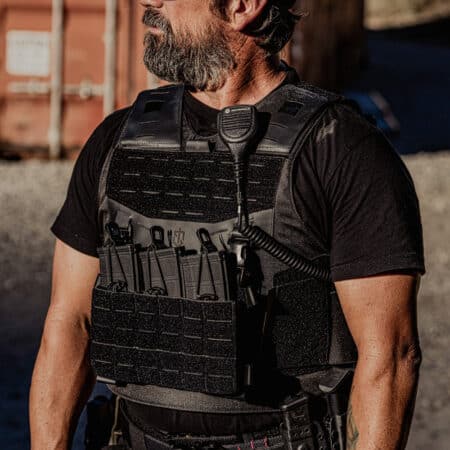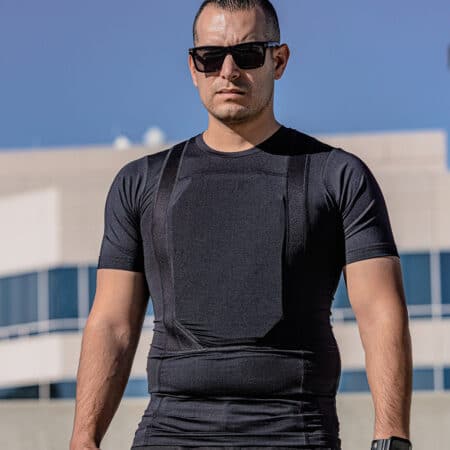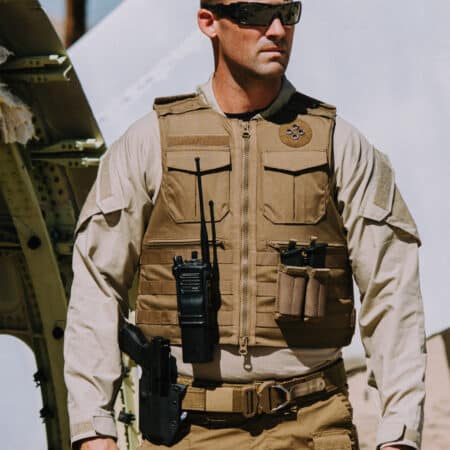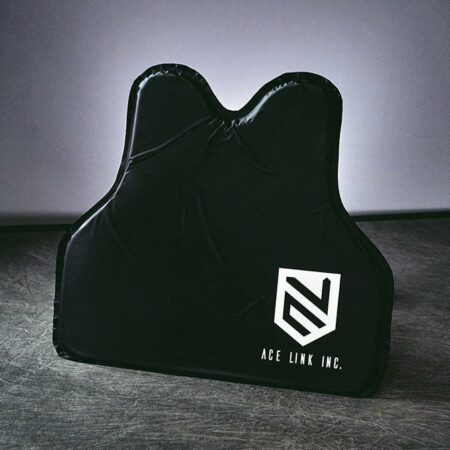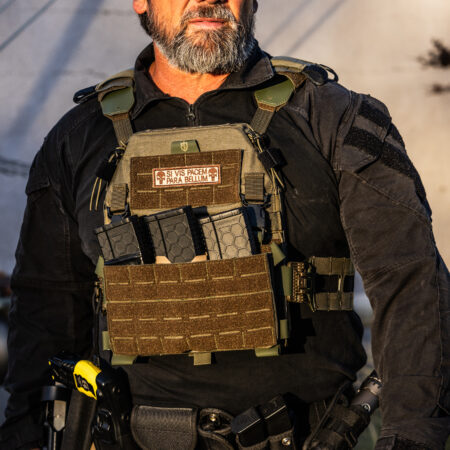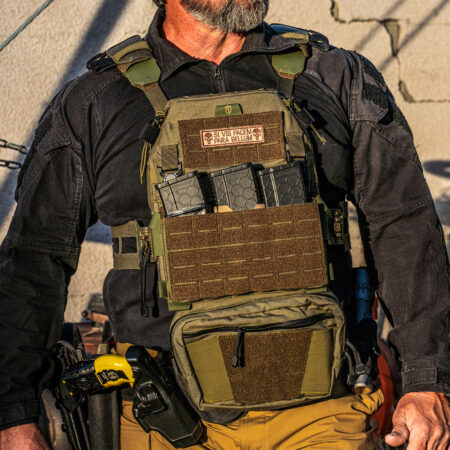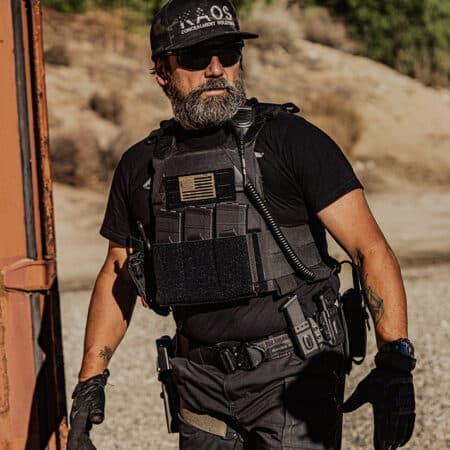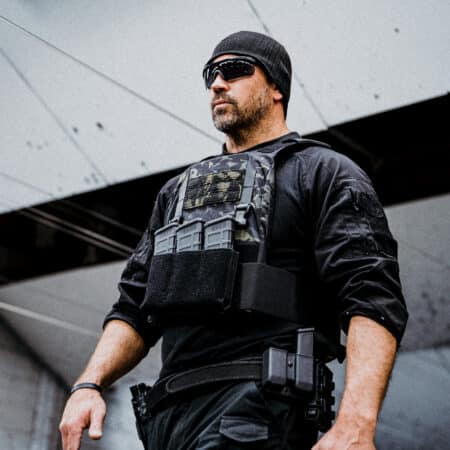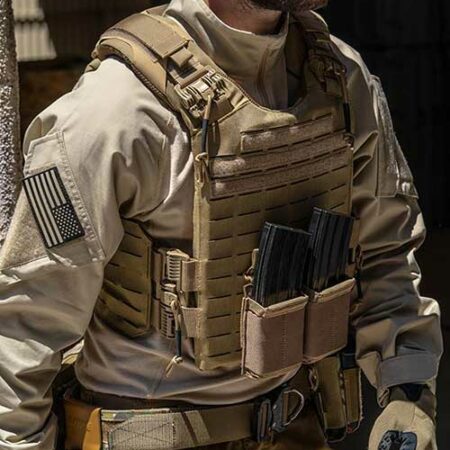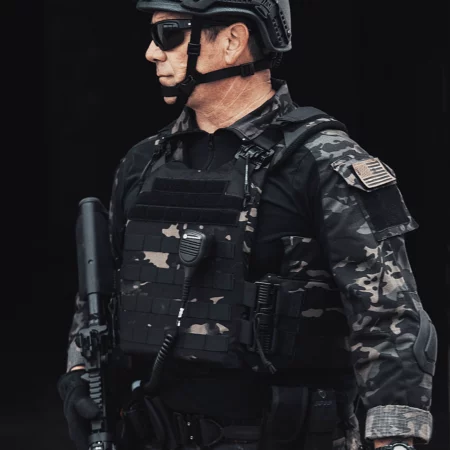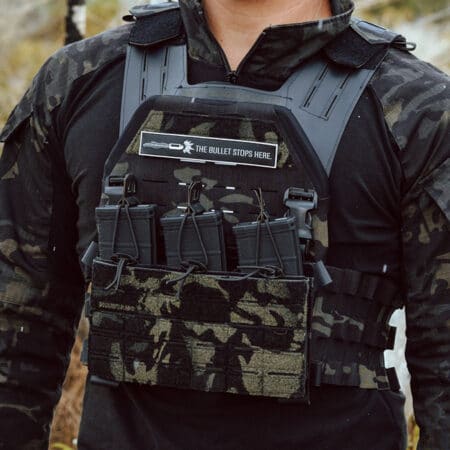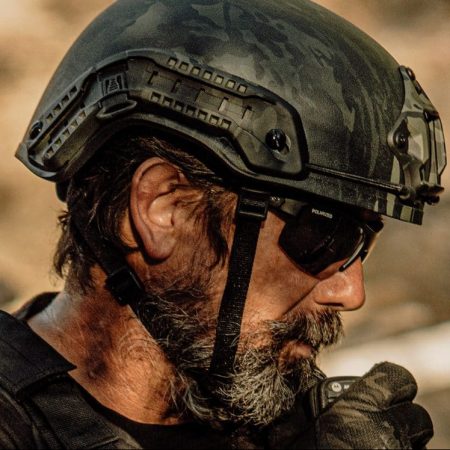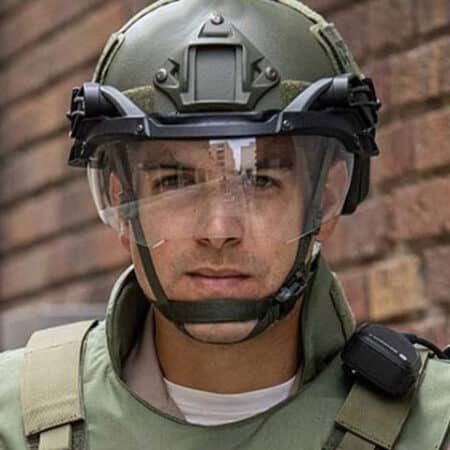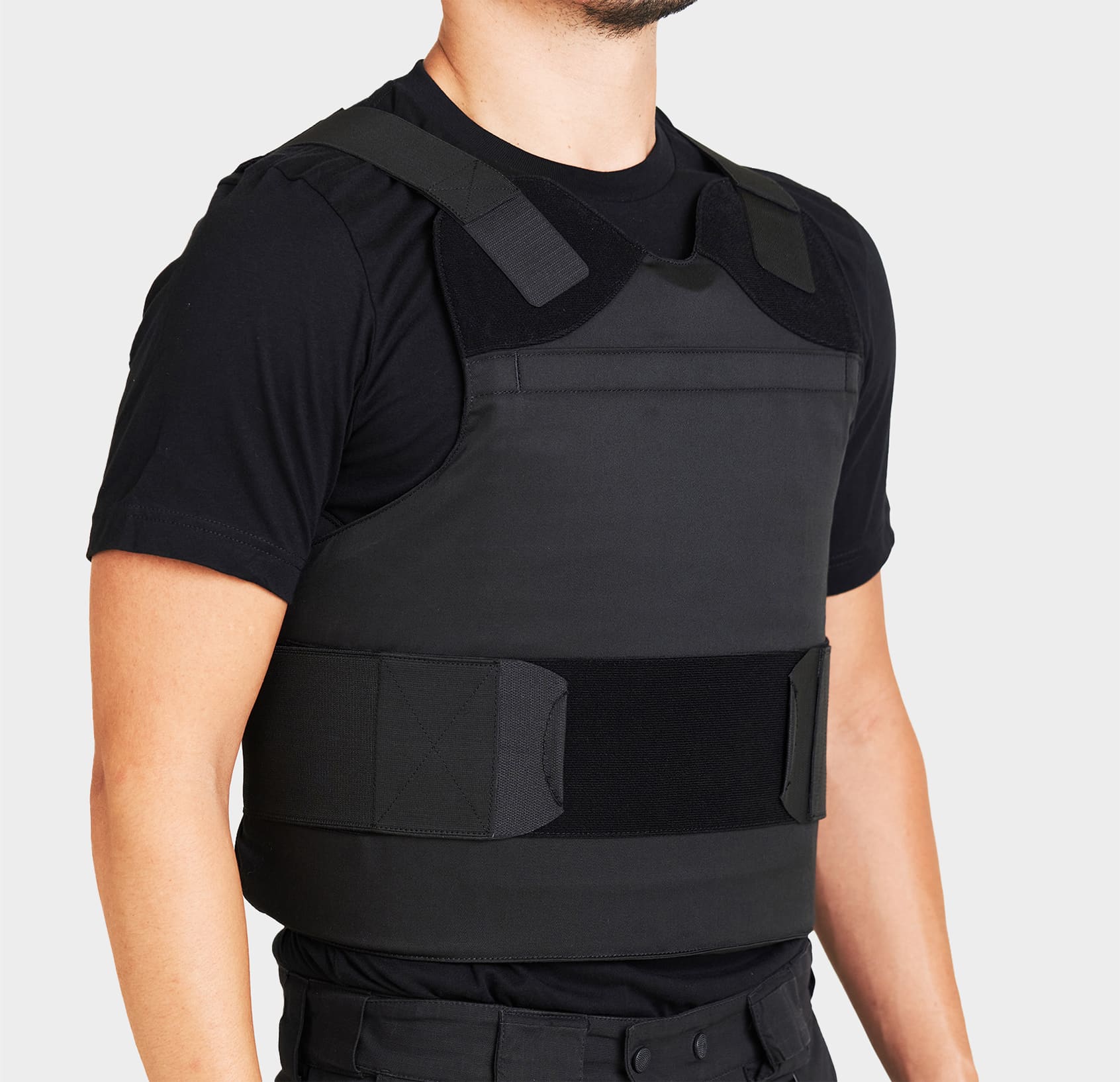- Choosing the right fitting vest & Protection level:
- How to wear a Bulletproof vest with plates?
- Can Armor vests take hard armor plates only?
- What is a "Stand Alone" type of plate?
- What is an "In Conjunction With" type of plate?
- Do you always need a level IIIA backer behind hard body armor plates?
- Final Thoughts:
Most tactical vests have compartments to add different body armor panels and plates. These armor plates determine the level of protection you get by wearing the tactical vest. Soft body armor panels, which are usually used in bulletproof vests, are made from Kevlar. They are more flexible, and lighter, however, they offer less ballistic protection than hard body armor plates. Soft Kevlar plates are rated to stop pistol calibers, whereas hard body armor plates can even stop rifle rounds
So, there are many considerations that have to be made when you are equipping your tactical vest or tactical plate carrier with body armor plates. In this post, we will tell you everything you need to know.
Choosing the right fitting vest & Protection level:
For an ideal body armor system, you need two main things. Firstly, you need a plate carrier vest that fits your body perfectly, and you need the right level of armor plates to hold inside it.
When it comes to fit, bulletproof vests and plate carriers are sized differently. Most bulletproof vests, which are designed to carry flexible soft body armor, are sized like normal clothes, in sizes like small, medium, Large, and Extra Large. On the other hand, tactical plate carriers are sized by the size of the plate they carry, since they carry hard armor plates.
So, when it comes to the fit of your bulletproof vests or plate carrier vests, the best way is to try them on. Preferably, you should test the vest with the armor plates or panels equipped, so that you can get an authentic feel.
Fit of Ballistic Vests:
For a vest to have a good fit, you need to be able to maintain mobility while wearing it, and it shouldn’t shift around your body as you move. The best way to test this is to do some quick drills while wearing the body armor. You can do a couple of burpees, twist your torso on both sides, and sit down to check how the fit holds up. If the vest isn’t moving around too much and provides coverage overall of your vital organs, you’re good to go.
Fit of Plate Carriers:
Plate carrier vests are much easier to fit. All of them have adjustable shoulder straps and cumberbund, therefore, if you know what size plate gives you the best coverage, you can adjust the fit of the carrier to conform perfectly to your body.
NIJ Protection Levels:
In the US, the protection levels for body armor are developed and regulated by the National institute of justice. There are two main classes of body armor, which offer the following protection levels:
Soft Body Armor:
Soft body armor comes in three NIJ levels, these are level IIa, level II, and Level IIIa
Level IIa vests are tested to stop small pistol calibers up to 9mm and .40 S&W. Level II body armor can also stop .357 Magnum rounds, whereas level IIIa, which is the most common soft body armor protection level, can stop almost all common pistol calibers up to .44 Magnum and .357 Sig.
Hard Body Armor:
Hard Body Armor plates are designed to offer ballistic protection against rifle calibers. According to the NIJ standards, there are two levels of ballistic protection against rifle threats. These are level III and level IV. Level III body armor plates are designed to stop rifle calibers up to a .308 Winchester or 7.62 Nato cartridge. It can also stop most intermediate rifle rounds, like the ones fired by AR-15s, and AK rifles. A Level IV body armor plate can stop most rifle rounds, up to 30.o6 Armor Piercing cartridges.
How to wear a Bulletproof vest with plates?
To put it in simple words, wearing body armor, and wearing it properly are two very different things. When you wear a bulletproof vest or plate carrier vest, there are multiple things that you need to keep in mind to get the best protection from your body armor.
Firstly, your body armor setup should offer maximum coverage of all of your vital organs. Ideally, your body armor should cover your chest from the collar bones, down to a couple of inches above your belly button. The plate should also be wide enough to cover your vitals, without digging into your shoulders when you tuck them in, and its shoulders restrict your movement. Bulletproof vests with flexible armor panels offer more coverage and are easier to wear.
Secondly, with a plate carrier vest, you need to make sure that the weight of the front and back plate is balanced. In most cases, you are going to mount some tactical gear on the front of your plate carrier, therefore, you can use a slightly heavier plate on the back to balance the weight out. You can also mount something like a tactical backpack, or a hydration bladder on the back of your tactical plate carrier vest to balance out the weight.
Lastly, you need to make sure that the bulletproof vest, and plates you are wearing feel comfortable on your body. The vest should be tight enough that it doesn’t shift around as you move, but still have enough space so that it doesn’t restrict your breathing.
Here’s an effective way to gauge the ideal tightness of your body armor setup. When you take a deep breath, and your chest expands, the body armor setup should start to feel tight against your chest.
Can Armor vests take hard armor plates only?
No, Armor Vests or tactical Plate Carriers can equip both hard body armor plates and soft body armor panels. However, soft body armor panels that are specifically designed to be flexible, and offer more coverage on the sides of the body, only work with bulletproof vests.
What is a “Stand Alone” type of plate?
Stand Alone Armor plates are designed to offer complete ballistic protection on their own. They don’t need an outer ballistic vest to offer maximum protection and can work in any normal tactical vest or plate carrier, which is made with materials like Nylon and doesn’t have any Ballistic Kevlar Fibers.
What is an “In Conjunction With” type of plate?
As the name suggests, “In Conjunction With” type of armor plates are designed to work in conjunction with some sort of ballistic outer vest. These plates are lighter and more comfortable than stand-alone plate carrier vests, and only offer their maximum protection when they are worn with a ballistic outer vest, which has soft body armor fibers in it as well.
For instance, the US military uses ESAPI plates, which offer maximum protection when used in the IOTV ballistic vest, which is level IIIa capable on its own.
Do you always need a level IIIA backer behind hard body armor plates?
No, though having a level IIIa backer behind a hard body armor plate can improve your protection, and it can allow you to use lighter plates, you can also easily get Stand Alone hard body armor plates that offer their maximum protection, according to their NIJ level without any ballistic backer. These plates can work with normal Nylon plate carriers and non ballistic vests.
Final Thoughts:
So, to put it all together, bulletproof vests and plate carriers are only as good as the body armor panels inside them. You need to make sure that you choose the rifle kind of tactical armor insert, that offers you suitable protection. Moreover, when you wear body armor, it should be comfortable and should fit perfectly.




